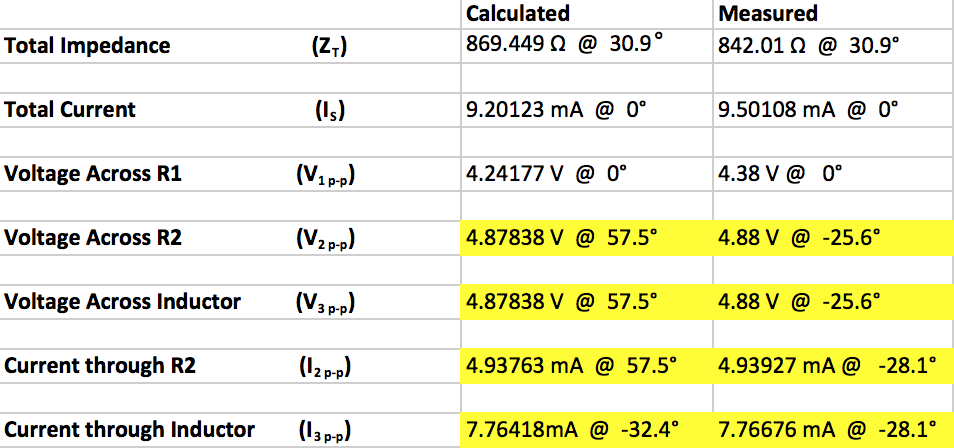INTRODUCTION:
I've been having a hard time in class trying to understand phase angles. I understand a few concepts which I've stated below for clarity in regards to this discussion.
1.) Inductors-->Current LAGS Voltage by 90 degrees.

I know that current through an inductor induces voltage which acts against current. Therefore, when voltage is at it's maxima or minima current is zero. This is clearly stated in the formula above when we set the slope (change in voltage respect to time) of the tangent line equal to zero.
2.) Capacitors-->Current LEADS Voltage by 90 degrees.

I know that current doesn't travel through a conductor. The electric flux is exchanged "coupled" across the dialectic "insulator" as voltage builds up on one side of the plate. Therefore, when the change of current, respect to time, is at it's greatest voltage is zero.
QUESTIONS:
I cannot get my head around on how to intuitively understand phase angles and more importantly how to analyze a parallel section of a network.
Trying to understand/analyze what the phase angle is for each component as we move down a series/parallel circuit is just plain confusing. Can anyone help me out or provide some educating online resources that could help out? A resource that could help me understand and construct a phasor diagram would even be helpful also.
I have attached an image of a circuit I had to construct and measure the characteristics of in class this week. I am also attaching the table of which includes my calculations and measurements. In the table I highlighted where my phase angles are mixed up. If someone could explain why my phase angles are not lining up that would be a great help also.
My AC source is set to the following parameters.
8 Volts Peak to Peak
10kHz as Frequency


